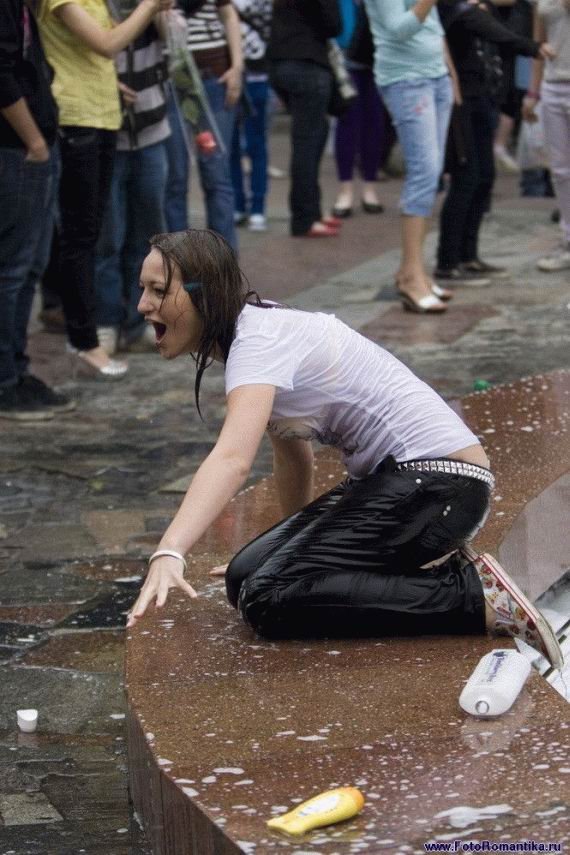|
|
Fountain Girls
|
The first of the Fountains of St. Peter's Square, by Carlo Maderno, (1614) was one of the earliest Baroque fountains in Rome, made to compliment the lavish Baroque façade he designed for St. Peter's Basilica behind it. It was fed by water from the Paola aqueduct, restored in 1612, whose source was 266 feet (81 m) above sea level, which meant it could shoot water twenty feet up from the fountain. Its form, with a large circular vasque on a pedestal pouring water into a basin and an inverted vasque above it spouting water, was imitated two centuries later in the Fountains of the Place de la Concorde in Paris.
The Triton Fountain in the Piazza Barberini (1642), by Gian Lorenzo Bernini, is a masterpiece of Baroque sculpture, representing Triton, half-man and half-fish, blowing his horn to calm the waters, following a text by the Roman poet Ovid in the Metamorphoses. The Triton fountain benefited from its location in a valley, and the fact that it was fed by the Aqua Felice aqueduct, restored in 1587, which arrived in Rome at an elevation of 194 feet (59 m) above sea level (fasl), a difference of 130 feet (40 m) in elevation between the source and the fountain, which meant that the water from this fountain jetted sixteen feet straight up into the air from the conch shell of the triton.
The Piazza Navona became a grand theater of water, with three fountains, built in a line on the site of the Stadium of Domitian. The fountains at either end are by Giacomo della Porta; the Neptune fountain to the north, (1572) shows the God of the Sea spearing an octopus, surrounded by tritons, sea horses and mermaids. At the southern end is Il Moro, possibly also a figure of Neptune riding a fish in a conch shell. In the center is the Fontana dei Quattro Fiumi, (The Fountain of the Four Rivers) (1648–51), a highly theatrical fountain by Bernini, with statues representing rivers from the four continents; the Nile, Danube, Plate River and Ganges. Over the whole structure is a 54-foot (16 m) Egyptian obelisque, crowned by a cross with the emblem of the Pamphili family, representing Pope Innocent X, whose family palace was on the piazza. The theme of a fountain with statues symbolizing great rivers was later used in the Place de la Concorde (1836–40) and in the Fountain of Neptune in the Alexanderplatz in Berlin (1891). The fountains of Piazza Navona had one drawback- their water came from the Acqua Vergine, which had only a 23-foot (7.0 m) drop from the source to the fountains, which meant the water could only fall or trickle downwards, not jet very high upwards.
The Trevi Fountain is the largest and most spectacular of Rome's fountains, designed to glorify the three different Popes who created it. It was built beginning in 1730 at the terminus of the reconstructed Acqua Vergine aqueduct, on the site of Renaissance fountain by Leon Battista Alberti. It was the work of architect Nicola Salvi and the successive project of Pope Clement XII, Pope Benedict XIV and Pope Clement XIII, whose emblems and inscriptions are carried on the attic story, entablature and central niche. The central figure is Oceanus, the personification of all the seas and oceans, in an oyster-shell chariot, surrounded by Tritons and Sea Nymphs.
|
|









